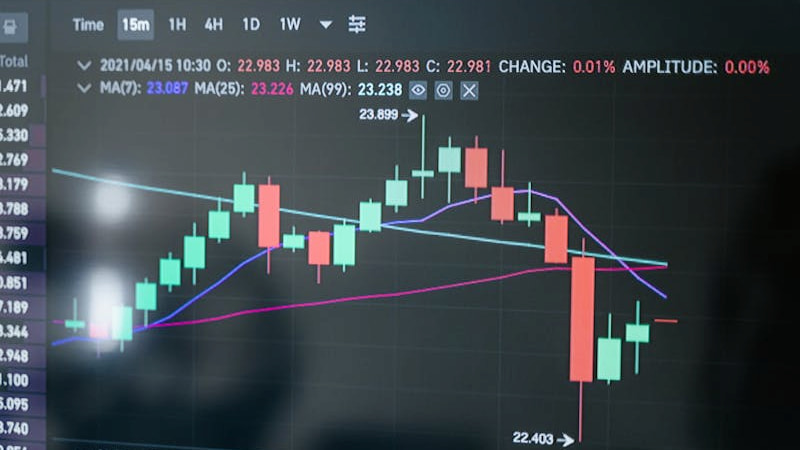Insider trading and market manipulation are both illegal, but they’re different beasts with unique fingerprints. Knowing the difference can save your career or keep you out of court.
Insider trading is using secret company info to trade for profit. Market manipulation is rigging the market itself to trick others.
One’s about exploiting private knowledge. The other’s about faking reality to move prices. Mixing them up is a rookie mistake with big consequences.
How Insider Trading Works
Insider trading happens when someone trades on nonpublic info. Think of a CEO selling stock before bad earnings hit. Or an analyst hearing merger talk and buying shares. It’s sneaky, unfair, and illegal.
The SEC busts about 600 cases a year, but many slip through. Studies say 10-15% of public company trades lean on private tips. It’s not just Wall Street pros.
Anyone with a secret, like a lawyer or accountant, can cross the line.
How Market Manipulation Works
Market manipulation is about distorting the market to fool investors. Think spreading fake news to pump a stock’s price, then dumping it. Or placing fake trades to create false demand. It’s like rigging a card game to trick players.
Schemes vary. Pump-and-dump scams, spoofing, or wash trading are common tricks. The CFTC and SEC flagged 400 manipulation cases in 2024. Unlike insider trading, it’s less about secrets and more about creating a mirage.
Who Gets Caught in Insider Trading
Insider trading snares anyone with access to private info. Corporate execs, bankers, even that Chicago Booth MBA overhearing deal chatter can get burned. It’s not just the big dogs. Small players get caught too.
FINRA’s 2024 data showed retail accounts increasingly tied to insider trades. That friend who got a tip from an exec uncle? He’s at risk. The SEC’s algorithms now dig into tiny trades, spotting odd patterns even in $5,000 accounts.
Who Gets Caught in Market Manipulation
Market manipulators are often traders or schemers looking to game the system. Hedge funds, day traders, or even crypto bros running pump-and-dump scams fit the bill. It’s not about inside info. It’s about bending market signals.
Cases are wild. In 2023, a group got nailed for tweeting fake Tesla news to spike shares. Unlike insider trading, manipulators don’t need company secrets. They just need a plan to fool the crowd.
Why Insider Trading Is Hard to Prove
Catching insider trading is like pinning a shadow. You need proof someone used secret info on purpose. Traders claim they just got lucky or read the market well. Without a clear trail, it’s tough to convict.
The SEC relies on data trails, but markets move fast. By the time trades flag, profits are often gone. Only 5% of suspicious trades lead to charges. Small-time insiders often dodge the net entirely.
Why Market Manipulation Is Hard to Prove
Market manipulation is tricky to nail too, but for different reasons. Proving someone meant to fake market signals is a slog. Spoofers cancel fake orders fast, leaving little evidence. Pump-and-dump scams hide behind “free speech” claims.
Regulators use AI to spot patterns, but it’s not foolproof. A 2024 case saw a trader dodge charges by claiming his fake trades were a “joke.” The SEC’s tools catch big schemes, but smaller ones often slip by.
Laws for Insider Trading
Insider trading falls under securities laws like the 1934 Exchange Act. The SEC’s Rule 10b-5 bans trading on material nonpublic info. Penalties hit hard. Fines, jail time, and bans are standard.
Cases set the tone. Martha Stewart’s 2004 conviction wasn’t just about trades. It was about lying to cover them. The law’s clear. If you trade on secrets, you’re rolling dice with your freedom.
Laws for Market Manipulation
Market manipulation also breaks the 1934 Exchange Act, but it’s broader. Rules ban deceptive practices like spoofing or false rumors. The Dodd-Frank Act added muscle, targeting manipulative schemes. Penalties mirror insider trading, with prison and hefty fines.
A 2023 crypto case showed teeth. Traders got seven years for pumping coins with fake hype. The law doesn’t care if it’s stocks or crypto. If you rig the market, you’re in trouble.
Impact on Your Finance Career
If you’re eyeing finance, both crimes are career killers. Insider trading’s shadow looms over every desk. One bad move, like acting on a merger tip, can end you. A FINRA ban is a scarlet letter.
Market manipulation is just as bad. Running a pump scheme or spoofing trades can land you blacklisted. A 2020 intern got axed for sharing fake stock tips online. Don’t be that guy. Your future’s worth more.
Why It Matters for Markets
Insider trading erodes trust in fairness. When 15% of trades seem dirty, investors get jittery. It’s not just a few bad apples. It’s a crack in the system’s foundation.
Market manipulation is worse. It makes prices lie, screwing everyone who plays fair. Both hurt, but manipulation is chaos hits broader. Clean markets need clean players. That starts with you.
Conclusion
Insider trading and market manipulation aren’t the same, but both can ruin you. One is about secret tips. The other is about faking reality. Know the difference to stay safe.
Document your trades, skip shady tips, and avoid gaming the system. The SEC’s watching, and so’s the market.
Play straight, and you’ll not just dodge trouble. You’ll build a rep that opens doors for decades.

